
The numbat, also known as the noombat or walpurti, is an insectivorous marsupial. It is diurnal and its diet consists almost exclusively of termites.

A semi-arid climate, semi-desert climate, or steppe climate is the climate of a region that receives precipitation below potential evapotranspiration, but not as low as a desert climate. There are different kinds of semi-arid climates, depending on variables such as temperature, and they give rise to different biomes.

Blattidae is a cockroach family in the order Blattodea containing several of the most common household cockroaches. Some notable species include:
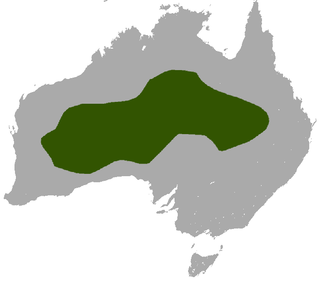
The Wongai ningaui, a common name of Ningaui ridei, is a tiny carnivorous marsupial native to the arid open grasslands of inland Australia. Their diet is mainly small insects, and occasionally larger prey such as spiders, grasshoppers and cockroaches, which they forage for at the ground and in clumps of spinifex. They have long and untidy fur, grey or gingery brown with longer black hairs, small ears, a narrow muzzle, and possess a partially prehensile tail and feet that allow them to climb. The population occurs sparsely across a wide area and common in favourable habitat, especially in years of good rainfall. Ningaui ridei was first described in 1975, one of two species of a new genus discovered amongst the poorly known mammals of the western regions of Australia.
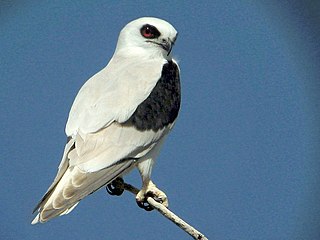
The letter-winged kite is a small, rare and irruptive bird of prey that is found only in Australia. Measuring around 35 cm (14 in) in length with a wingspan of 84–100 cm (33–39 in), the adult letter-winged kite has predominantly pale grey and white plumage and prominent black rings around its red eyes. It gains its name from the highly distinctive black underwing pattern of a shallow 'M' or 'W' shape, seen when in flight. This distinguishes it from the otherwise similar black-shouldered kite. This species is also the only nocturnal species within the order Accipitriformes despite few differences found in its visual anatomy to other closely related kites.

Southern ningaui refers to Ningaui yvonneae, a tiny marsupial carnivore related to the Dasyuridae family. Similar in appearance to Ningaui ridei, found throughout central Australia, this species occurs in spinifex on semi-arid sandplains across the southern coast of the continent. The fur is a tawny or greyish olive colour, light grey below, and distinguished by shades of cinnamon. Ningaui yvonneae prefers smaller prey, including insects and spiders, but capable of killing and consuming larger animals such as cockroaches and skinks. Their narrow muzzle is used with quick and fierce bites about the head to despatch their meal. The species description was published in 1983, unknown until the closer examination of the genus Ningaui established in 1975.

The spiny-tailed monitor, also known as the Australian spiny-tailed monitor, the ridge-tailed monitor or Ackie's dwarf monitor, is an Australian species of lizard belonging to the genus of monitor lizards (Varanus).

Pogona minor is a species of agamid lizard from a group commonly known as bearded dragons, and is found on the southwest coast and interior of Western Australia. This taxonomic name includes the widespread type known as western bearded dragon, Pogona minor minor which is widespread across West Australia between the Pilbara and the south coast, and the subspecies, Pogona minor minima is confined to the Wallabi Group of islands. There is another subspecies, Pogona minor mitchelli which lives in tropical woodlands of the Kimberley area of West Australia.
The little pied bat is a species of vesper bat in the family Vespertilionidae. It is found only in semi-arid woodlands in eastern Australia.

The western or inland broad-nosed bat is a species of vespertilionid bats. They are endemic to Australia and widespread throughout the inland, especially in arid and semi-arid regions. This insectivorous microbat, measuring 12 cm in length, roosts in tree hollows during the day and forages over woodland and water at night.

The chestnut quail-thrush is a native Australian bird of the family Cinclosomatidae. These scrub birds are endemic to Australia and found in all states - barring Tasmania. They are relatively uncommon and are isolated to the semi-arid and arid fringes of the Australian interior.

Morethia boulengeri is a species of lizard in the family Scincidae. The species is endemic to Australia and Indonesia.

Drymaplaneta semivitta is a species of cockroach native to Australia and introduced to New Zealand. In New Zealand, it is known as the Gisborne cockroach, after the city of Gisborne where it was first discovered in the country.
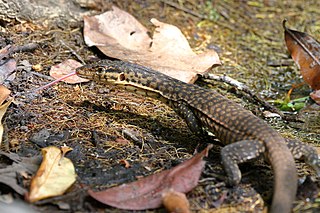
Mitchell's water monitor is a semiaquatic species of monitor lizard in the family Varanidae. The species is native to Australia.

Polyzosteria limbata, the Botany Bay cockroach is an insect found in south eastern Australia.
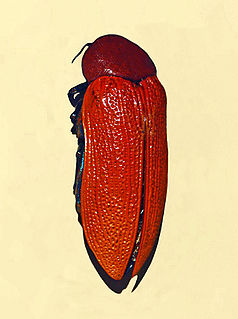
Julodimorpha bakewelli is a species of beetle in the family Buprestidae. It was first described by Adam White in 1859.

Polyzosteria is a genus of around sixteen species of cockroaches in the Blattidae family. Some of these Australian insects are attractively marked, such as Polyzosteria mitchelli. The type species of the genus is the Botany Bay cockroach, Polyzosteria limbata.
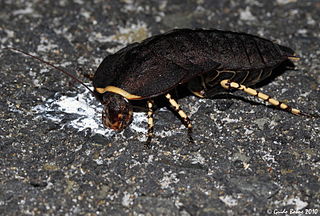
Polyzosteria cuprea is a species of bush cockroach found in south western Australia. It is a diurnal species and its typical habitat is arid regions and eucalyptus woodland.

Leonhardi's ctenotus, Leonhardi's skink, or common desert ctenotus is a species of skink found in a range of arid and semi-arid regions throughout mainland Australia. The species was named after German anthropologist Moritz von Leonhardi in 1919 and belongs to the Ctenotus genus, one of the largest generas of lizards in Australia.
Polyzosteria yingina is a bush cockroach found only in Tasmania. It was first described in 2020 by Shasta Henry and others.

















